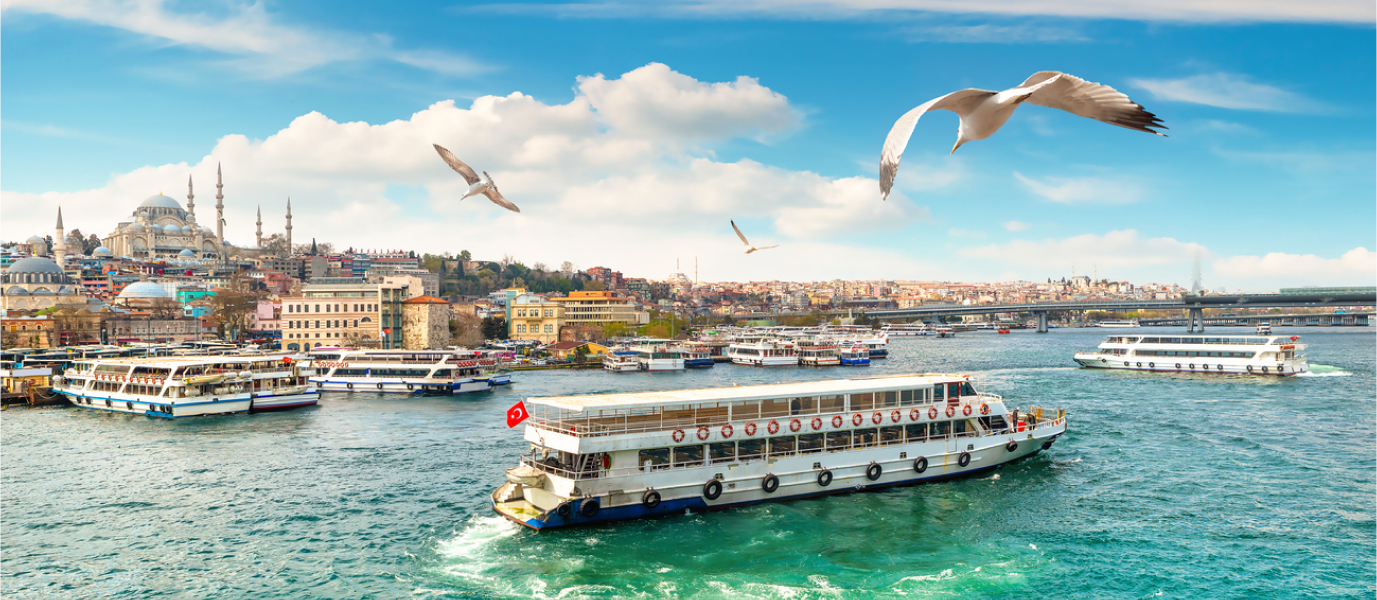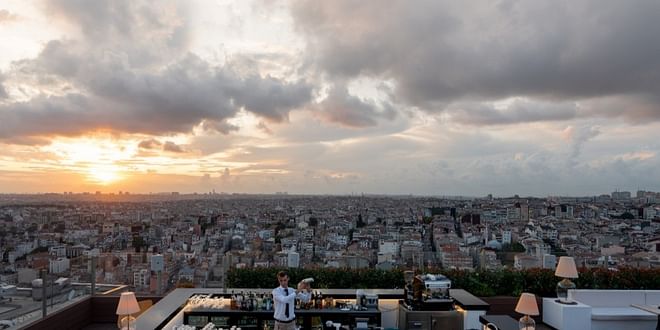The ancient city of Ephesus is among the greatest heritage sites in Anatolia (the historical region of Asia Minor). Its ruins stand in western Turkey on the shores of the Aegean Sea and constitute a magnificent built heritage legacy which is still relatively well preserved.
A visit to Ephesus should be top of the list on any trip to Turkey. The city experienced several different civilisations and is mentioned in the Bible, which gives you some idea of its historical significance.
History of Ephesus
Ephesus was an important religious, cultural and trade centre for several centuries and bore witness to different civilisations including the Cimmerians, Persians, Romans, Goths and Arabs. This prized location was the gateway to Asia Minor and an important trade port into the Aegean Sea and the entire Mediterranean.
Several legends tell of when the city was established. Androclos, son of the king of Athens, was searching for a new site while fleeing from the Dorian invasion of Greece around the 10th century BC. An oracle foresaw that the site would be indicated by a fish and a boar. When the boar appeared, Androclos hunted it down at the site where a new settlement would later be built. After Androclos’ death, a mausoleum was built in his honour near the current Magnesia Gate.
Whether this is all true or not, Ephesus went on to become a hugely important place and the second city of the Roman Empire to have a population of more than 250,000. The Romans had control of Ephesus from 190 BC. The city would reach its peak under the reign of Emperor Augustus, with trade in the region making it one of the most important places in Asia Minor. Among the buildings raised during the period was the great Library of Celsus.
After this glorious time a serious of events including sieges, invasions and earthquakes would bring the city to its knees. The bridge was blocked by debris, and the city entered its long decline in the Middle Ages.
What to see in Ephesus
A visit to the ruins of Ephesus is like a trip back through the ages. You’ll encounter the ruins of public buildings, commercial premises, private homes, streets still bearing their cobbles and other features of the city. The entire place was declared a UNESCO World Heritage Site in 2015.
As you tour the site you’ll come across several buildings which were hugely important to the ancient city and are still in strikingly good condition. Let’s take a look at the main monuments of Ephesus.
Theatre
The ruins of the theatre are perhaps the most impressive in Ephesus. The spectacular rows of seats are still intact, and in their day would have accommodated around 25,000 people. It’s astonishing to think that these stones were laid between the 3rd and 2nd centuries BC, and to imagine the performers and gladiators who would have come here. The theatre is a colossal building with an arch measuring 150 metres in diameter.
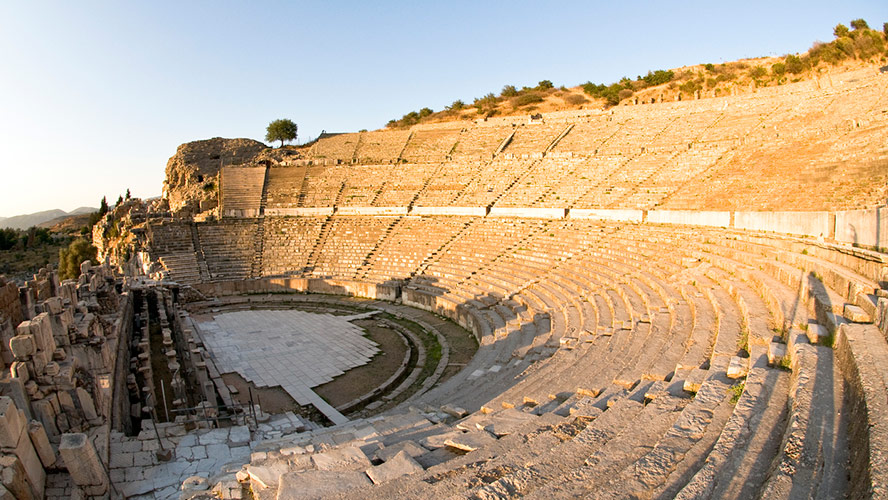
Street of the Curetes
The curetes were priests in Greek mythology charged with keeping the sacred fire burning in the Prytaneion, the seat of the city’s magistrates. The cobbled Street of the Curetes is the main street in Ephesus and most of the ruins lie in the vicinity. It feels like an outdoor museum, with the remains of houses, temples and columns, and it still has mosaics on the ground.
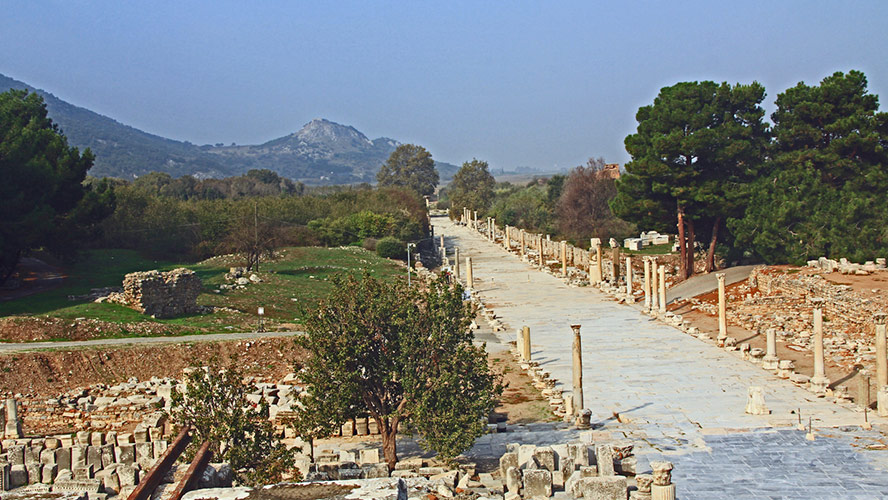
A reconstruction of the street gives you some idea of what it would have been like, when people once walked beneath porticos on both sides. The street would have had toilets, public baths, the Temple of Hadrian and even a brothel. The Gate of Mazaeus and Mithridates is on the main entrance side, and the Gate of Hercules is on the side with the market agora.
Library of Celsus
The ruins of the library are again spectacular and you’ll find them almost at the beginning of the Street of the Curetes. It was built around 117-135 AD in honour of the senator and Roman proconsol of Asia, Tiberius Julius Celsus Polemaeanus. It was one of the largest libraries in the ancient world after those at Alexandria and Pergamon, and could store up to 12,000 scrolls.
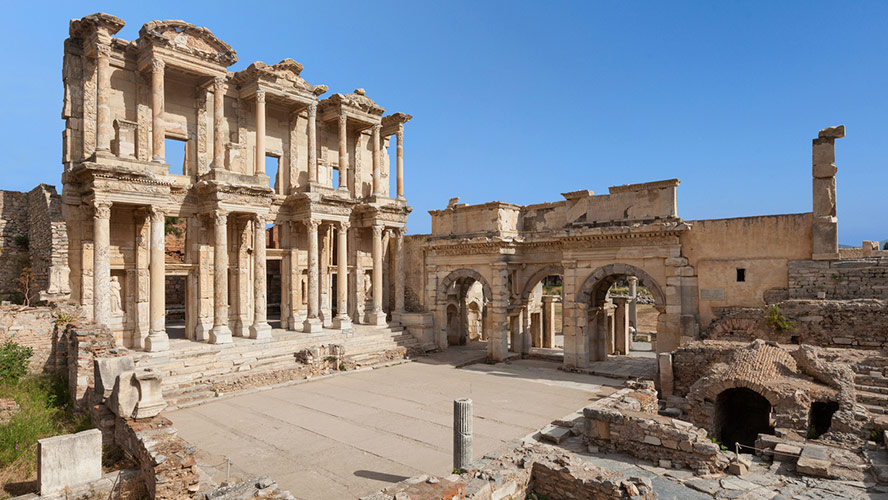
The building’s facade is in an excellent state of repair. In fact, the ruins of the library are among the most striking, with two rows of eight columns that were once adorned with the statues of the Four Virtues. The marble sarcophagus of Celsus is in a chamber beneath the apse.
Temple of Hadrian
The Temple of Hadrian also stood on the Street of the Curetes and part of the facade is still intact . It was built around the year 138 in honour of Emperor Hadrian, who visited the city some 10 years prior.
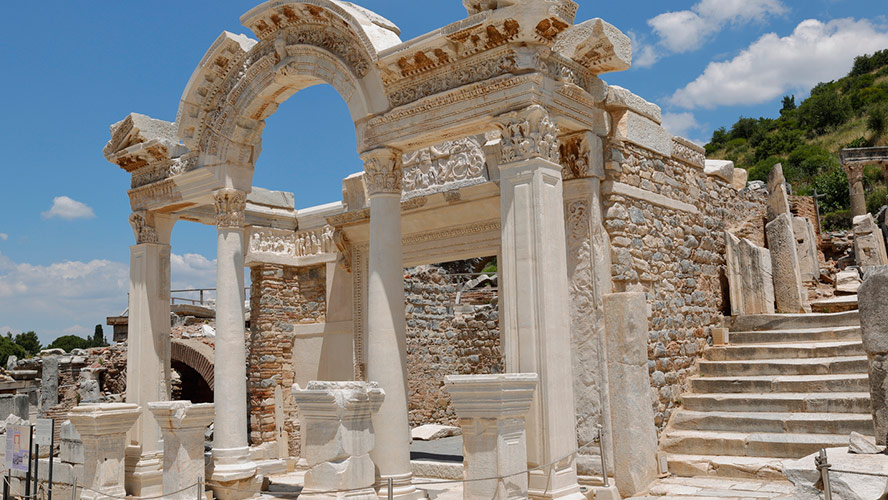
Temple of Artemis
Though all that remains of what was one of the Seven Wonders of the Ancient World are a column and a few stones, this is undoubtedly a world-class heritage site. The Temple of Artemis is considered the greatest temple of antiquity. It had 120 columns and was built around 575 BC in honour of the goddess Artemis, the Lady of Ephesus. It was destroyed and set ablaze several times, on the last occasion by the Goths in the year 262 AD. The temple is 2 km away from the main ruins of Ephesus, on the outskirts of the town of Selçuk.
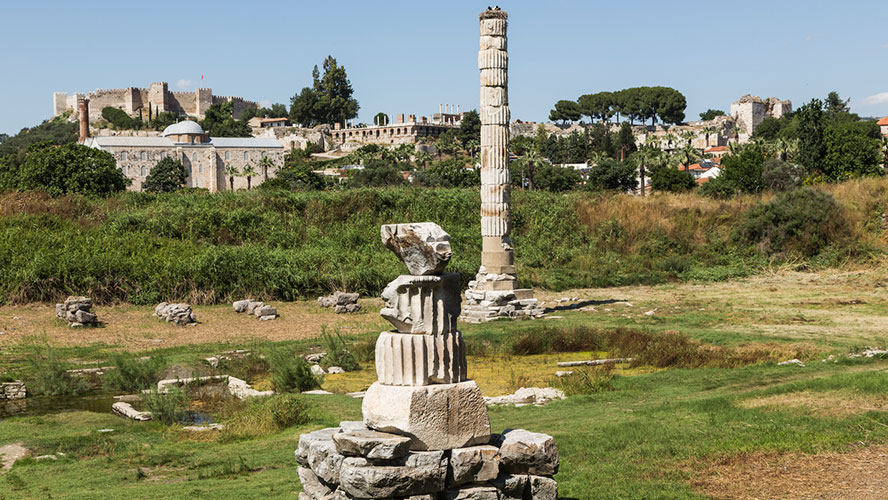
There’s much more to see in the ruins of the ancient city of Ephesus, including private homes and commercial premises, mosaics, walls and columns. Ephesus is up there with the best archaeological sites across the world, among them Machu Picchu, Petra, Pompeii and Carthage.
Guided tours and activities
Ephesus is visited by thousands of people every year and you won’t have a problem finding a guided tour of the site. There are organised trips from Istanbul to Ephesus and other places such as Pamukkale and Cappadocia.
If you’re not fussed about other places or are stuck for time, there are shorter tours of Ephesus from the coastal towns of Kusadasi and Izmir.
Most trips to Ephesus include stops at Selçuk to see the Temple of Artemis, the House of the Virgin Mary and the Basilica of St John.
What to see in Selçuk
Selçuk is the nearest town to the ancient city. It has a population of around 30,000 and is the gateway for the throngs who want to visit the ruins of Ephesus. The local economy still largely depends on agriculture though tourism has undoubtedly had an effect.
The main attraction in Selçuk are the ruins of the Temple of Artemis, a site rich in symbolism and one of the most important ancient monuments in the world. Selçuk also has a fortress, the Basilica of St John (6th century) and the House of the Virgin Mary, where the mother of Christ is said to have been brought after the crucifixion. Several Popes made a pilgrimage to the house and secured its reputation as a ‘sacred place’.
Every Saturday, Selçuk holds an interesting market for local food and clothing producers.






































































